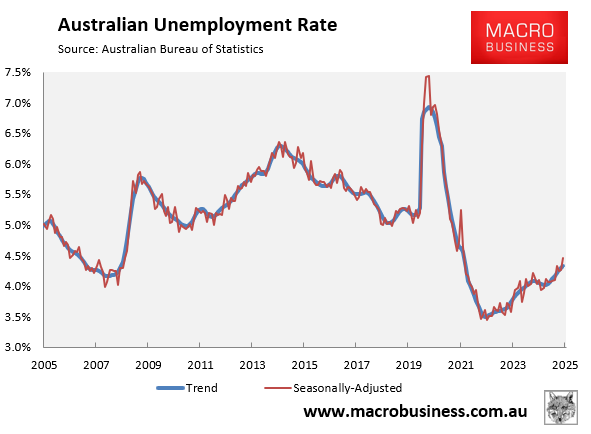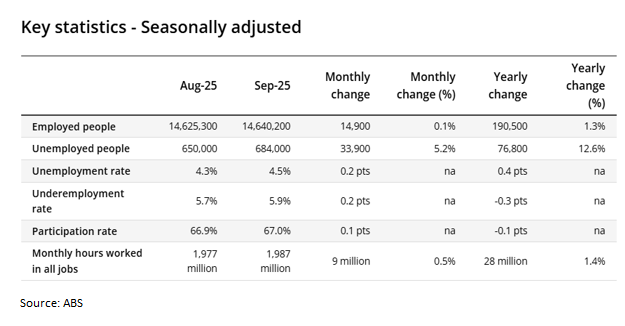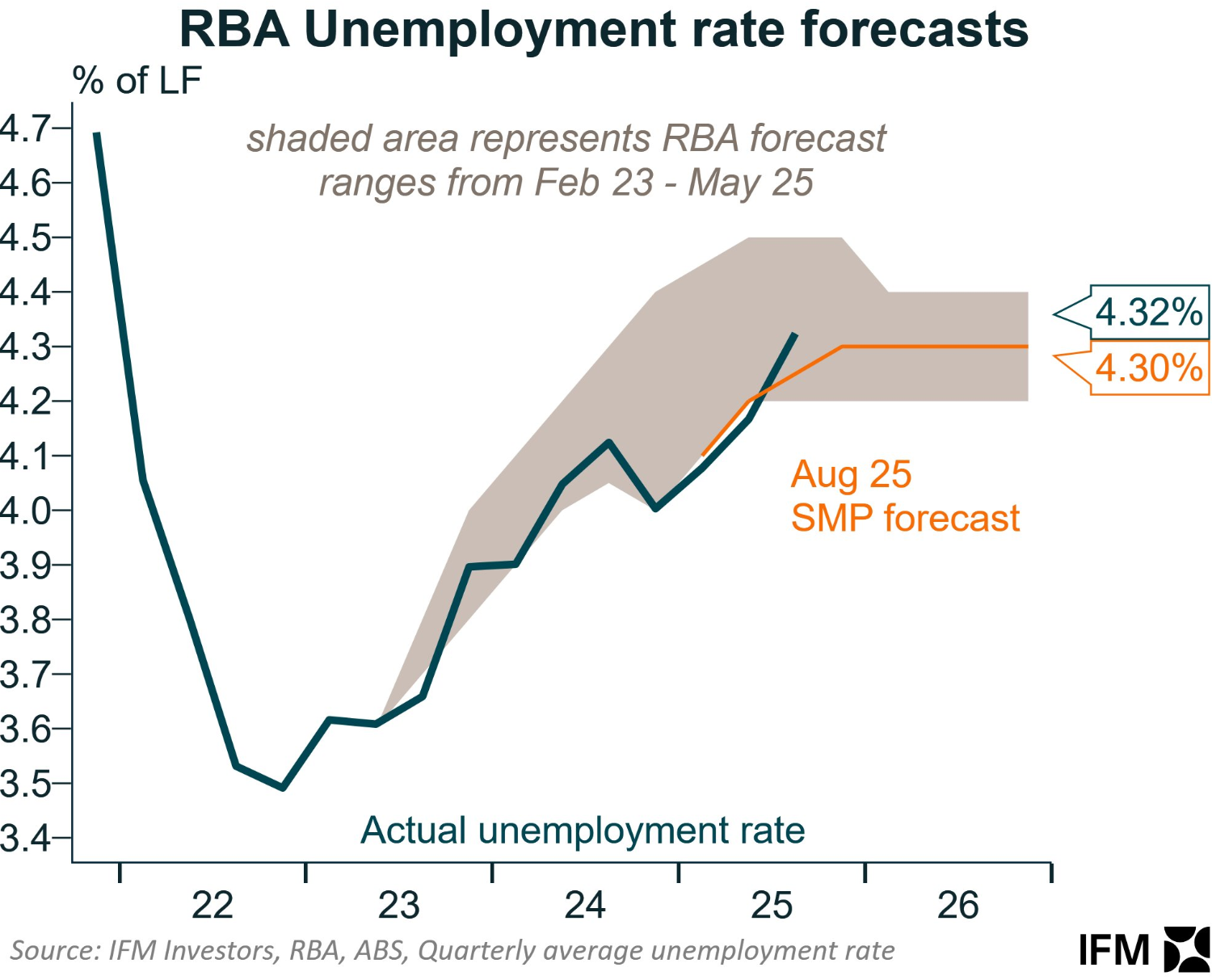A surge in Australia’s unemployment rate is the one factor that could force the Reserve Bank of Australia (RBA) to cut rates sooner and deeper.
The latest Statement of Monetary Policy from the RBA forecast that Australia’s unemployment rate would peak at only 4.3% and remain at this level until late 2027.
However, Thursday’s labour force release from the Australian Bureau of Statistics (ABS) reported a large 0.2% jump in Australia’s unemployment rate to 4.5% in September, up from a revised 4.3% in August.

‘This is the highest seasonally adjusted unemployment rate recorded since November 2021″, noted Sean Crick, ABS head of labour statistics.
‘There were 34,000 more unemployed people in September. The number of employed people also grew, up 15,000 in the same period”.
‘As a result of these increases, the participation rate rose by 0.1 percentage points to 67.0%, although this is below the record high of 67.2% we saw at the beginning of the year’, Crick said.

In trend terms, the unemployment rate rose to 4.32%, just above the RBA’s peak forecast:

To exacerbate the situation, the underemployment rate increased by 0.2 percentage points to 5.9% in September in seasonally-adjusted terms.
As a result, the underutilisation rate, which combines the unemployment and underemployment rates, rose by 0.4 percentage points to 10.4%.
To be fair, the data isn’t quite as bad as the headline suggests given that overall employment grew by 14,900 (split about 60% to 40% full-time to part-time), whereas aggregate monthly hours worked rose by 0.5% over the month.
Nevertheless, the weak headline leaves the RBA in an awkward position as it tries to balance apparent resurgent inflation risks.
The Q3 CPI inflation print, due for release on 29 October, will be key to a November rate cut.

